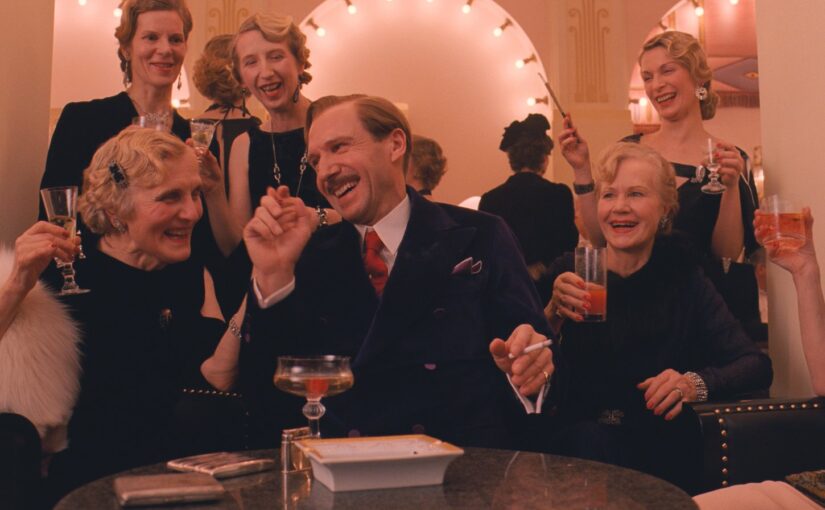Wes Anderson’s The Grand Budapest Hotel brims with elegance, color, and theatrical detail, making every frame look like a moving painting. Among the delights of its celebratory scenes is the Champagne Cup, a sparkling punch that feels at home in a ballroom filled with guests in feathered finery. Effervescent, fruity, and brimming with charm, this punch is more than just a drink. It is a cinematic symbol of festivity, camaraderie, and the joy of sharing.
The Champagne Cup reflects the film’s sweeping atmosphere of luxury and artistry. Light, refreshing, and endlessly fizzy, it captures the spirit of grand hotels, where every moment feels like a celebration and every glass clinking is an invitation to possibility.
🍹 Ingredients
- 🥃 2 oz brandy
- 🍊 1 oz triple sec
- 🍬 1 oz simple syrup
- 🥤 3/4 cup soda water
- 🍾 1 pint chilled champagne
- 🥒 Fresh cucumber, mint, fruit (garnish)
🥂 Preparation
- In a large pitcher, stir together the brandy, triple sec, simple syrup, and soda water.
- Add plenty of ice for chill and dilution.
- Pour in the champagne just before serving to preserve its lively bubbles.
- Adorn with cucumber peels, fresh mint, and slices of seasonal fruit.
🍇 How to Serve Best
The Champagne Cup is ideal for gatherings. Serve it from a stylish pitcher or punch bowl into elegant coupe glasses or tall wine glasses. Its sparkling profile shines as both a welcome drink and a center-stage refreshment at formal dinners, festive holidays, or whimsical parties. To capture the spirit of The Grand Budapest Hotel, focus on presentation. Colorful garnishes and playful glassware add to the charm. This cocktail is less about single servings and more about shared moments that sparkle. Cheers!
📜 Sidebar: The History of the Champagne Cup
The Champagne Cup traces back to the 19th century when punch bowls were the life of European and British parties. Unlike heavier rum or brandy punches, the Champagne Cup celebrated refinement. It showcased the rising popularity of champagne among the social elite during an age when luxury drinks represented sophistication and status.
Historically, “cups” were light mixed drinks, often made with a base spirit, sugar, soda, and garnishes of fruit or herbs. The Champagne Cup became a fashionable centerpiece at weddings, hotel banquets, and social clubs. Its bubbly nature symbolized joy, its garnishes suggested abundance, and its communal service reflected the idea of celebration in company rather than indulgence in solitude.
By the late 19th and early 20th centuries, sparkling cups appeared across Europe and America. They were embraced as stylish alternatives to heavier cocktails and as ideal refreshments at outdoor garden parties. This tradition fits perfectly into Anderson’s The Grand Budapest Hotel, where glamour, social connection, and ritualized joy flow as freely as the champagne itself.
Image: Fox
